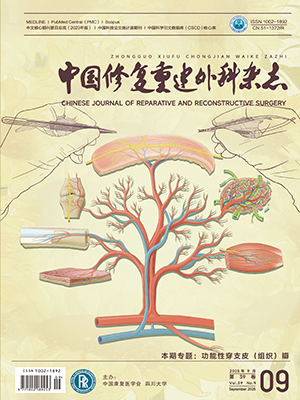| 1. |
Swart E, Bezhani H, Greisberg J, et al. How long should patients be kept non-weight bearing after ankle fracture fixation? A survey of OTA and AOFAS members Injury, 2015, 46(6): 1127-1130.
|
| 2. |
Christey GR, Tomlinson M. Risk factors for ankle fracture requiring operative fixation. Aust N Z J Surg, 1999, 69(3): 220-223.
|
| 3. |
Ackermann J, Fraser EJ, Murawski CD, et al. Trends of concurrent ankle arthroscopy at the time of operative treatment of ankle fracture: a national database review. Foot Ankle Spec, 2016, 9(2): 107-112.
|
| 4. |
吴永伟, 刘军, 芮永军, 等. 自制尖齿钩钢板治疗撕脱性骨折的效果评价. 中国现代医学杂志, 2017, 27(4): 131-134.
|
| 5. |
Choi JH, Lee KT, Lee JY, et al. Surgical results of zonesⅠandⅡfifth metatarsal base fractures using hook plates. Orthopedics, 2013, 36(1): e71-74.
|
| 6. |
May MM, Lawton JN, Blazar PE. Ulnar styloid fractures associated with distal radius fractures: incidence and implications for distal radioulnar joint instability. J Hand Surg (Am), 2002, 27(6): 965-971.
|
| 7. |
Nguyentat A, Camisa W, Patel S, et al. A biomechanical comparison of locking versus conventional plate fixation for distal fibula fractures in trimalleolar ankle injuries. J Foot Ankle Surg, 2016, 55(1): 132-136.
|
| 8. |
赵宏谋, 张言, 胡东, 等. 支撑钢板与螺钉固定治疗旋后-内收型Ⅱ度踝关节骨折的比较研究. 中国修复重建外科杂志, 2017, 31(5): 553-558.
|
| 9. |
Downey MW, Duncan K, Kosmopoulos V, et al. Comparing the knotless tension band and the traditional stainless steel wire tension band fixation for medial malleolus fractures: A retrospective clinical study. Scientifica (Cairo), 2016, 2016: 3201678.
|
| 10. |
Bariteau JT, Fantry A, Blankenhorn B, et al. A biomechanical evaluation of locked plating for distal fibula fractures in an osteoporotic sawbone model. Foot Ankle Surg, 2014, 20(1): 44-47.
|
| 11. |
Switaj PJ, Fuchs D, Alshouli M, et al. A biomechanical comparison study of a modern fibular nail and distal fibular locking plate in AO/OTA 44C2 ankle fractures. J Orthop Surg Res, 2016, 11: 100.
|
| 12. |
刘军, 芮永军, 吴永伟, 等. 自制齿状钩钢板治疗后交叉韧带胫骨止点撕脱骨折. 中国修复重建外科杂志, 2017, 31(6): 765-767.
|
| 13. |
Sands A, White C, Blankstein M, et al. Assessment of ankle and hindfoot stability and joint pressures using a human cadaveric model of a large lateral talar process: a biomechanical study. Medicine (Baltimore), 2015, 94(11): e606.
|
| 14. |
林伟文, 赖茂松, 熊浩, 等. H型微型钛板治疗肱三头肌腱止点断裂疗效观察. 中国修复重建外科杂志, 2013, 27(12): 1533-1534.
|
| 15. |
殷渠东, 顾三军, 刘军, 等. 尖齿开口钩钢板治疗尺骨鹰嘴骨折疗效观察. 中国修复重建外科杂志, 2016, 30(9): 1094-1097.
|
| 16. |
石维祥, 罗晓中, 丁勇, 等. 3D打印技术在内外踝尖部撕脱骨折治疗中的应用. 中国修复重建外科杂志, 2018, 32(2): 187-191.
|
| 17. |
方刚, 王静. 踝关节的应用解剖及临床意义的初步研究. 内蒙古民族大学学报(自然科学版), 2010, 25(6): 688-691.
|
| 18. |
杨琨, 吴天昊, 李根, 等. 胸锁关节的解剖学及生物力学特征. 中国组织工程研究, 2018, 22(11): 1695-1700.
|
| 19. |
Krishna SV, Pilar A, Pai SN, et al. Traumatic rupture of posterior tibial tendon following closed supination-adduction ankle fracture: A case report. JBJS Case Connect, 2016, 6(3): e75.
|
| 20. |
王海鹏, 顾峥嵘, 刘云吉, 等. 手术治疗踝关节骨折伴三角韧带损伤的疗效观察. 中国修复重建外科杂志, 2015, 29(4): 416-419.
|




